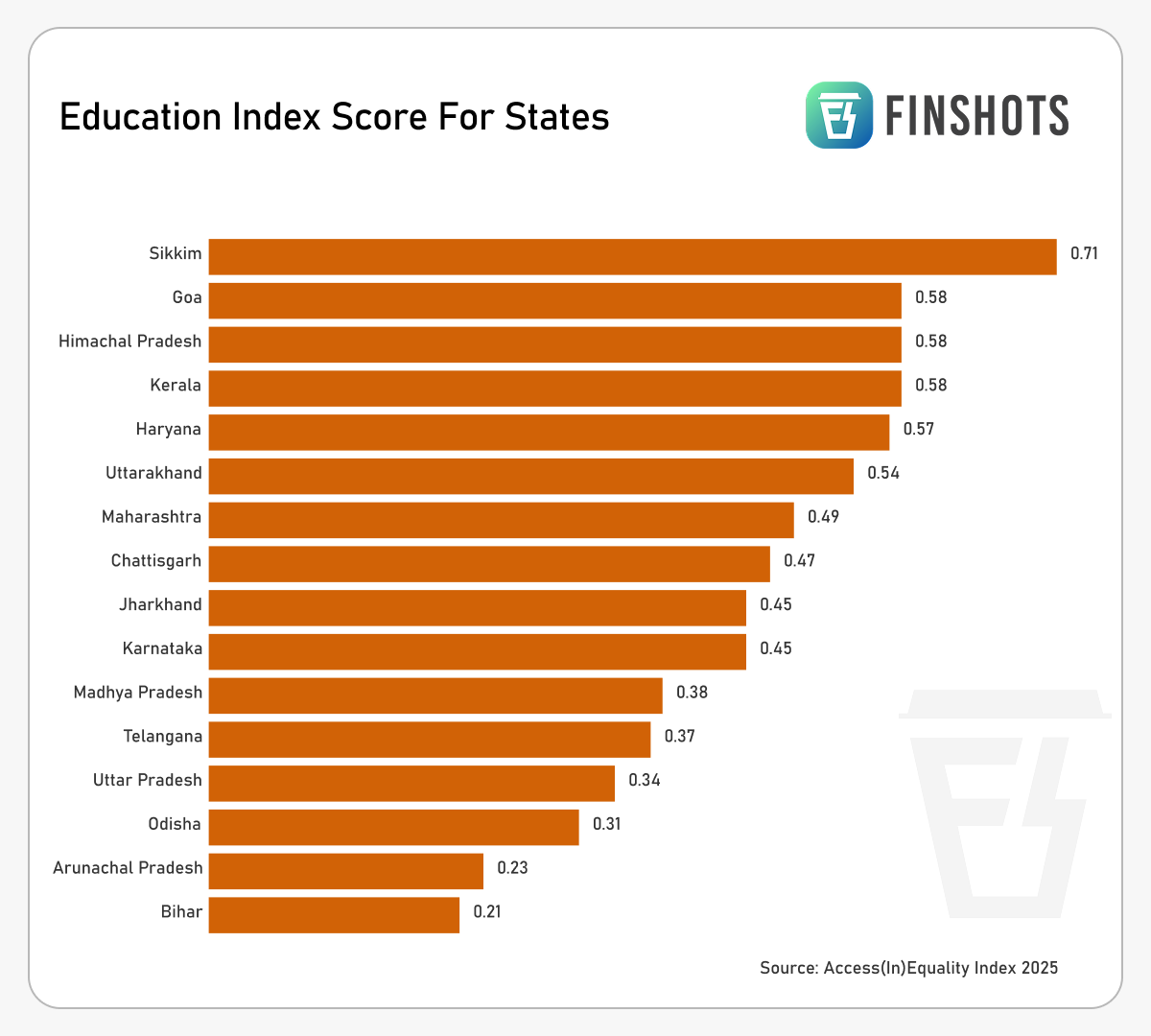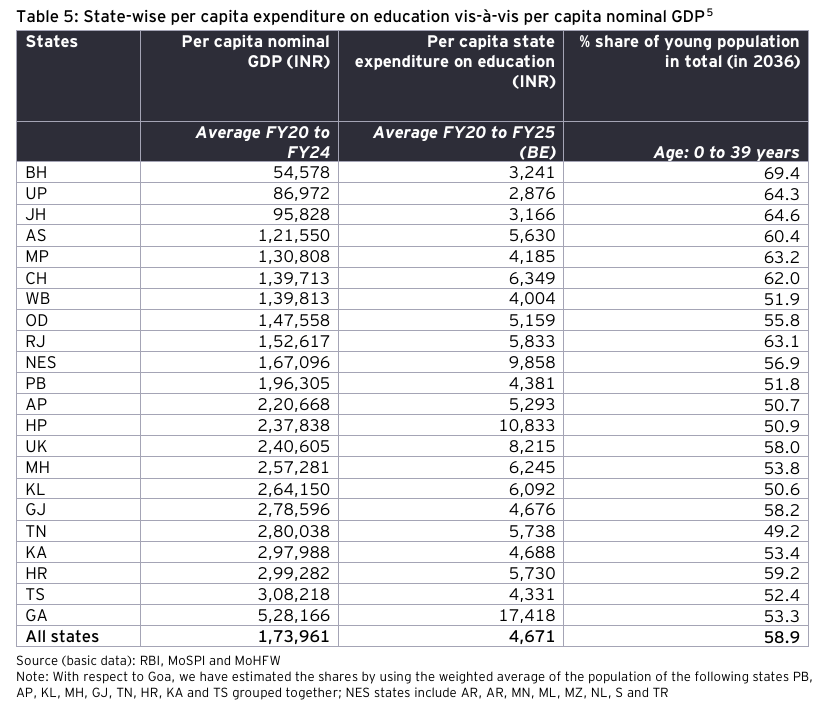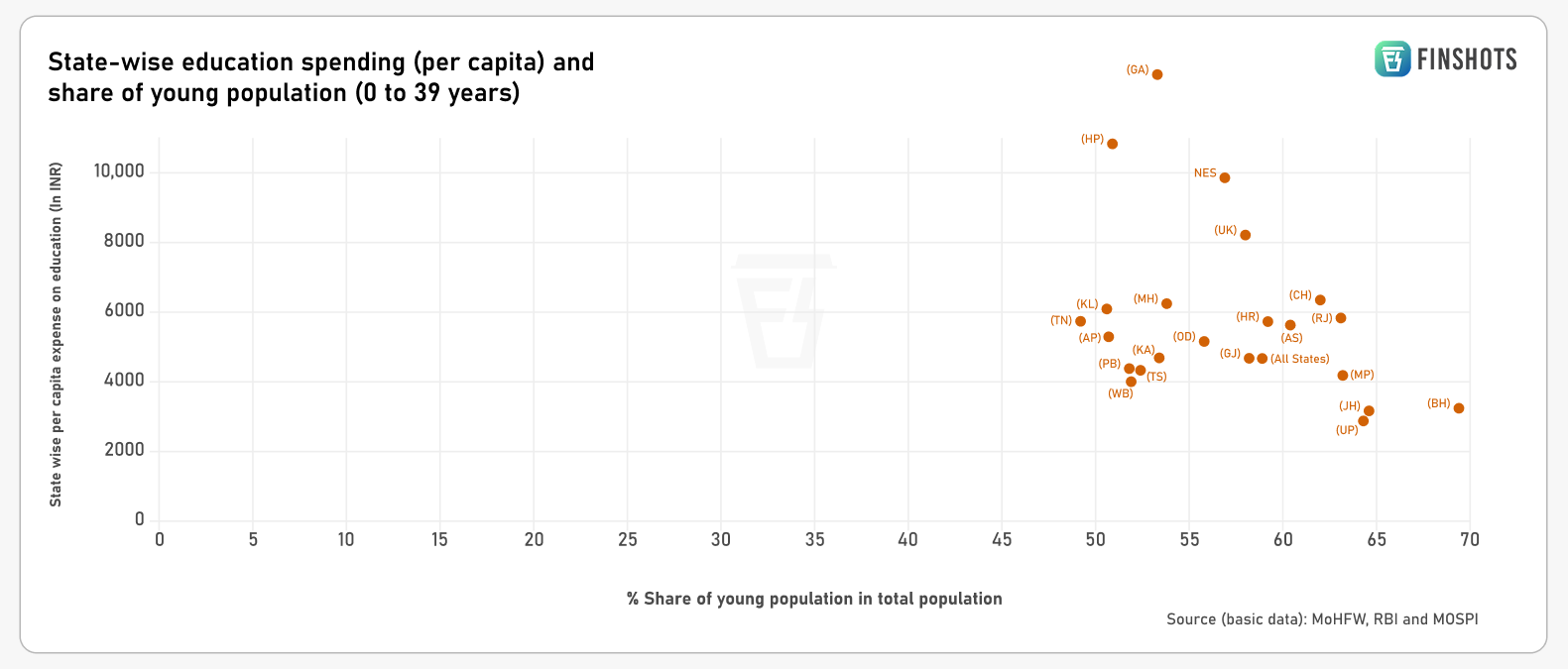Why does India spend less on education?

In today’s Finshots, we look back at the National Education Policy (NEP) and tell you why educational spending in India is yet to meet the 6% mark.
But before we begin, if you love keeping up with the buzz in business and finance, make sure to subscribe and join the Finshots club, loved by over 5 lakh readers.
Already a subscriber or reading this on the app? You’re all set. Go ahead and enjoy the story!
The Story
About five years ago, we lived in a completely different world. The pandemic had brought everything to a standstill. People were cooped up in their homes, unsure of what the next day would look like. It changed how we thought about the future.
And it was around this time that the Indian government rolled out the National Education Policy (NEP) 2020.
The idea was to completely overhaul the old 10+2 system of education, replacing it with a more structured 5+3+3+4 format — starting from preschool to high school. For the first time, playschools or anganwadis were brought into the formal education system.
And the structure made sense. For the first five years, called the foundational stage, children aged 3 to 8 would learn through play, stories and language, since this is when most brain development happens. Then came the preparatory phase from classes 3 to 5, where learning became more interactive and skill-based. The next three years (classes 6 to 8) introduced vocational training and even internships. And finally, four years of high school education wrapped up the new system.
This revamp rekindled hopes of transforming India's education landscape. And at the end of the government’s press release, there was a line that really stood out:
The Centre and the States will work together to increase the public investment in Education sector to reach 6% of GDP at the earliest.
But here we are, five years on. And government data clearly shows that education spending is still falling short of that ambitious 6% mark. For context, for over a decade, India's education spend has hovered between 4% and 4.6% of GDP.
Now sure, calling this “too little” might sound a bit harsh. After all, India’s current education spend is higher than countries like China (4%) and Japan (3.2%). Even UNESCO’s recommended range for education spending is between 4% and 6% of GDP. So we’re technically within the target.
But here’s the thing. India isn’t China or Japan. These countries have already crossed the basic hurdles of school enrolment and literacy. Their education systems matured long ago. They’re also dealing with ageing populations, which means their school-going population is shrinking. On top of that, they spend a lot more privately on education, something that doesn’t show up in public figures.
India, on the other hand, has a huge youth population. Nearly 68% of our people are of working age between 15 to 64. And we’re aiming big. We want to become a developed economy by 2047. But to do that, we need to invest in our future workforce today. That means investing more in education, publicly and systematically.
And we don’t have to look too far for inspiration either. Our Asian neighbours, countries like Bhutan and the Maldives, spend 5.8% and 5.2% of their GDP on education respectively. Even India’s own Kothari Commission, way back in 1966, had recommended the 6% target as the bare minimum for building a strong, skilled post-independence workforce. And every education policy reform since has recommended it time and time again.
So then, why haven’t we reached that mark yet, you ask?
Well, it’s not like the expenditure on education hasn’t increased. If you look at the numbers, education budgets have grown by about 4–6% on average each year since 2020. In the Union Budget for FY26, for instance, the allocation to education stood at ₹1.28 lakh crore. That’s a 6.5% jump from the previous year.
But the problem is, our GDP is also growing steadily, pretty much at the same pace. So even though the government is spending more in absolute terms, as a percentage of GDP, we’re stuck in the same range.
Then there’s the matter of priorities. The government has to juggle between defence, healthcare, infrastructure and social welfare. With limited money to go around, long-term investments like education often get pushed to the back seat.
To make things trickier, education in India isn’t just the Centre’s job. It’s a “concurrent subject”, which means both state and central governments share responsibility. And that’s where things really get uneven.

If you look at state-wise numbers, the per capita spending on education in India averages around ₹4,671. But this hides the massive variation between states. Goa, for instance, spends ₹17,418 per person on education, thanks to a smaller population. Maharashtra spends ₹6,245, backed by stronger revenues.

But states like Bihar, Jharkhand and Uttar Pradesh, despite having the highest number of young people, aren’t so lucky and spend less than the national average.

And there’s a deeper issue here. The return on investment in education is hard to measure in the short run. While roads and hospitals show instant results, education takes time to show returns. You can't see the impact of better primary education until a child completes their full journey — something that could take about 15 years. As one former University Grants Commission official put it, visible results from NEP 2020 will take time. And in policy circles, time is a luxury.
This lag creates a vicious cycle. States spend less on education. This results in a less skilled workforce. That impacts productivity, innovation and income levels. Fewer jobs and investments flow in. Tax revenues shrink. And there’s even less money to spend on education. It's a rinse and repeat cycle.
So does that mean India will never hit the 6% mark?
Not necessarily.
An EY report suggests there is a way, by boosting the government’s income. To put things in perspective, right now, the government’s revenue receipts stand at around 21% of GDP. But if this could rise to 29%, it would open up 8% of GDP for new spending. Of that, 2.5% could go toward reducing the fiscal deficit (excess government spending over earnings). The remaining 5.5% could be used for education and healthcare. That’s our window.
But again, not all states can shoulder this burden equally. So the Centre would have to step in with equalisation transfers. Basically, extra funds to help lower-capacity states catch up. That way, no child’s education is compromised irrespective of which state they live in.
And signs of change may be slowly beginning to show. For FY24, India’s direct tax to GDP ratio hit 6.6% which was the highest in fifteen years. And that is expected to inch up to 6.7% in FY25. With tax reforms like the new regime that limits deductions and reduces disputes, the government might gradually build more fiscal space.
If that happens, and if we back it with the right policies, maybe, just maybe, we’ll finally hit that 6% mark we’ve been chasing for decades.
And when we do, we’ll be following in the footsteps of countries like Germany and South Korea, which saw education not as a cost, but as a lifeline when they rebuilt their economies. They invested early and boldly. And the end results were a skilled population and a global reputation for quality.
So yeah, maybe it’s time we asked ourselves not “what haven’t we done?” but “why not do more?”
Until then…
If this story helped you understand India’s approach to education spending, share it with your friends, family or even strangers on WhatsApp, LinkedIn and X, so they can decode it too.
🔊Introducing Pitch Perfect 2025!

If you've been following us for a while, you know our story didn't begin in a corporate boardroom. It started in a college dorm room with 3 broke students who chose to skip placements and chase something bigger.
That something was Finshots.
Today, Finshots reaches over 500,000 readers, and through Ditto, we've empowered 800,000+ Indians to make smarter insurance decisions.
Now, we're looking for the next game-changing idea to back.
Introducing Pitch Perfect 2025 – a flagship startup pitch challenge powered by Zerodha.
So, if you've got a BIG idea that could help Indians get better with money, pitch it to us!
What's at stake:
✅₹10,00,000 in prizes
✅Potential funding from Zerodha Rainmatter
✅All-expenses-paid trip to Bangalore to pitch directly to Nithin Kamath and industry veterans
Ready? 👉Apply Now!
